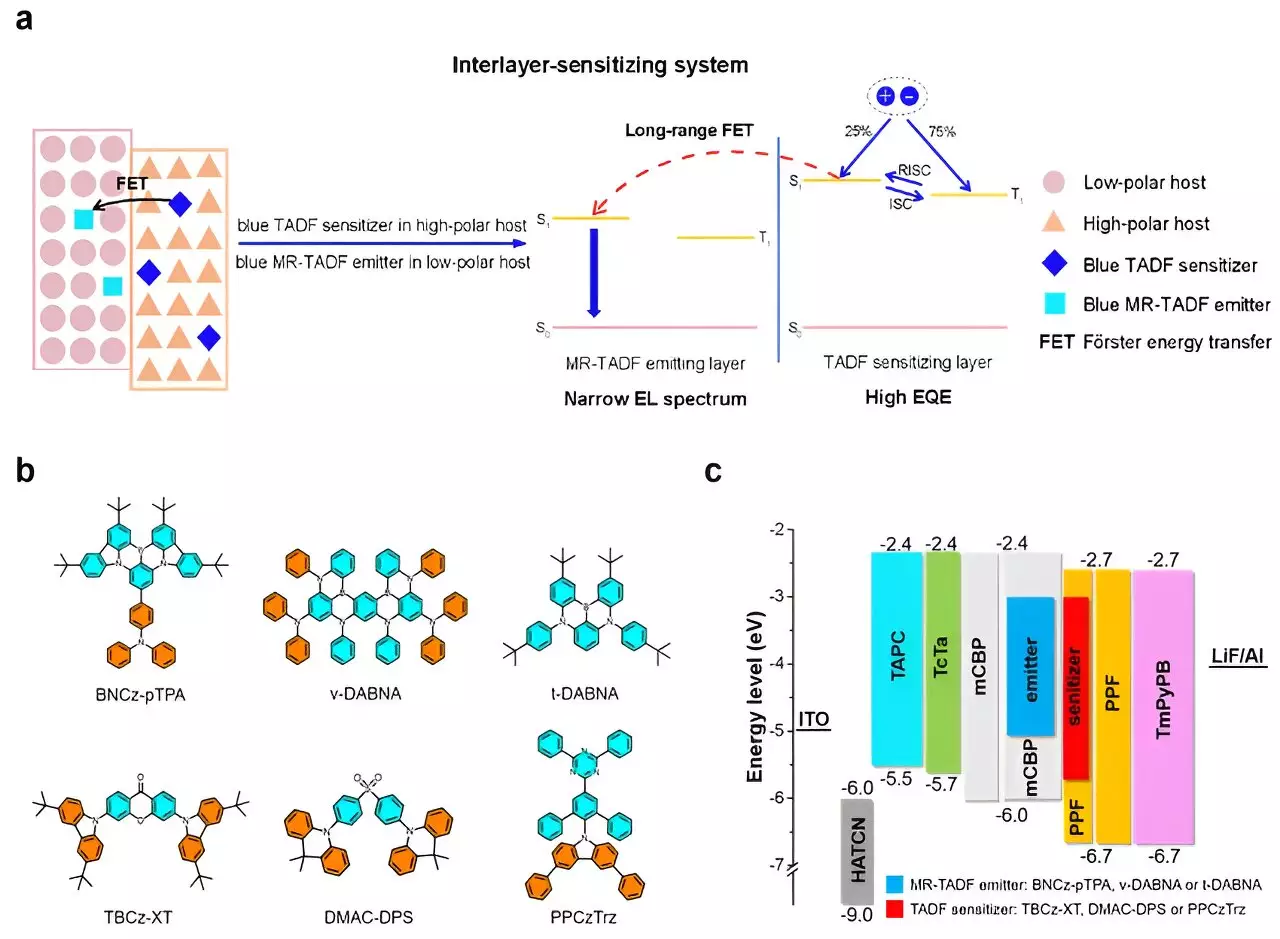In the realm of organic light-emitting diodes (OLEDs), the search for materials that can produce narrow electroluminescence (EL) spectra is ongoing. One promising avenue for achieving this is through the use of Multi-resonance thermally activated delayed fluorescence (MR-TADF) materials. These materials have the potential to revolutionize OLED technology, but they are not without their challenges.
While MR-TADF emitters offer narrow EL spectra, they often face issues with triplet-involved quenching processes. These processes can lead to efficiency roll-offs and undermine the overall EL efficiency of the OLEDs. To address this issue, many researchers have turned to the concept of hyperfluorescence OLEDs. However, the current strategies for optimizing blue MR-TADF emitters may not be the most effective.
A team of scientists from South China University of Technology, led by Professor Zujin Zhao, have developed a new interlayer sensitization strategy for blue MR-TADF emitters. This strategy involves separating the TADF sensitizer and MR-TADF emitter into two adjacent emitting layers (EMLs) with different hosts. By doing so, the MR-TADF emitters can be sensitized by TADF sensitizers through long-range Fӧrster energy transfer (FET).
Based on this interlayer sensitization strategy, the team was able to create high-performance hyperfluorescence OLEDs using various blue MR-TADF emitters and TADF sensitizers. These OLEDs emitted strong blue light with narrow EL spectra and achieved outstanding external quantum efficiencies (EQEs) of up to 38.8%. This represents a significant improvement over unsensitized devices and demonstrates the effectiveness of the interlayer sensitization strategy in enhancing EL efficiency and color purity simultaneously.
The development of the interlayer sensitization strategy marks a significant advancement in the field of blue hyperfluorescence OLEDs. This innovative approach offers a promising solution to the challenges associated with optimizing blue MR-TADF emitters and paves the way for the creation of high-performance OLEDs with exceptional color quality and efficiency. As researchers continue to explore new strategies and technologies, the future of OLEDs looks brighter than ever.


Leave a Reply